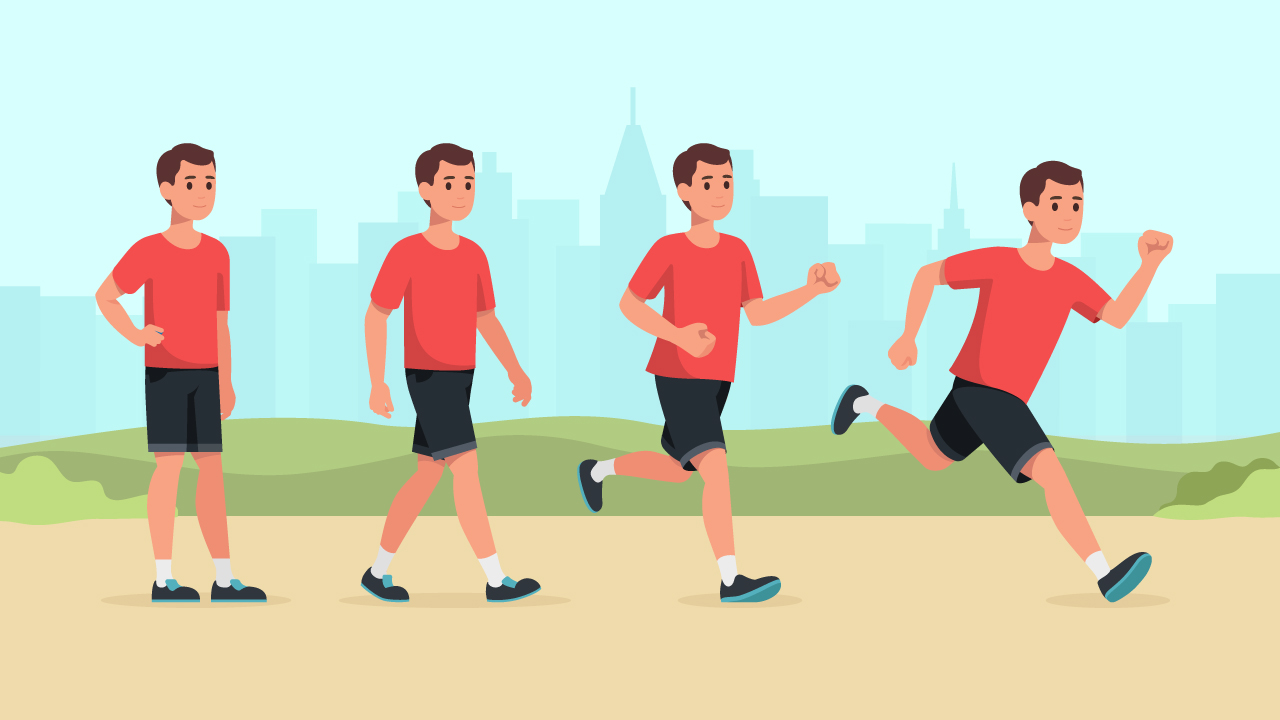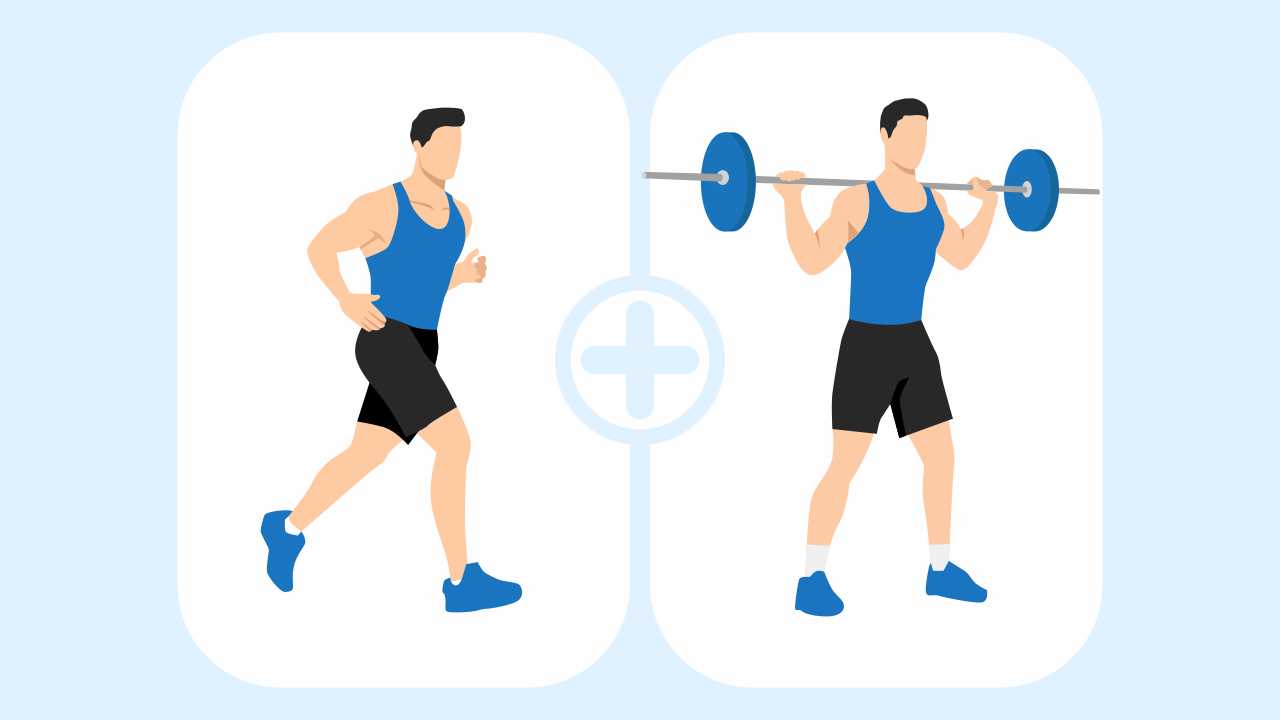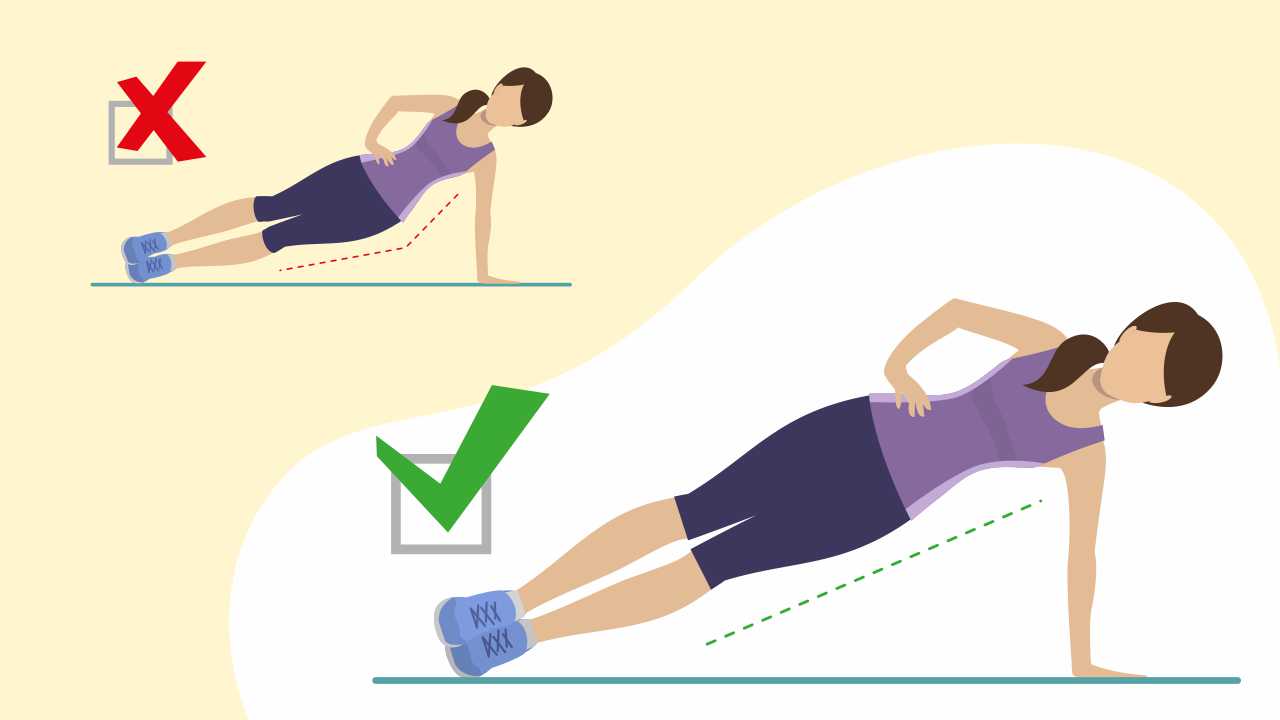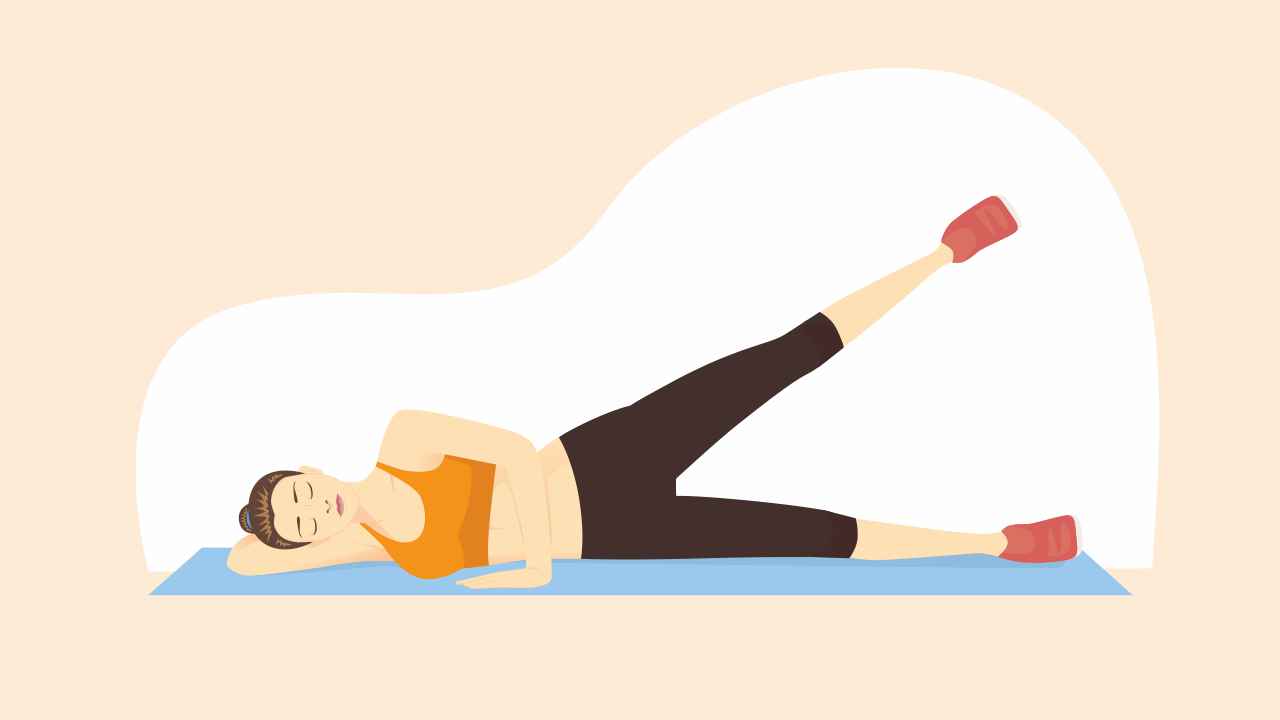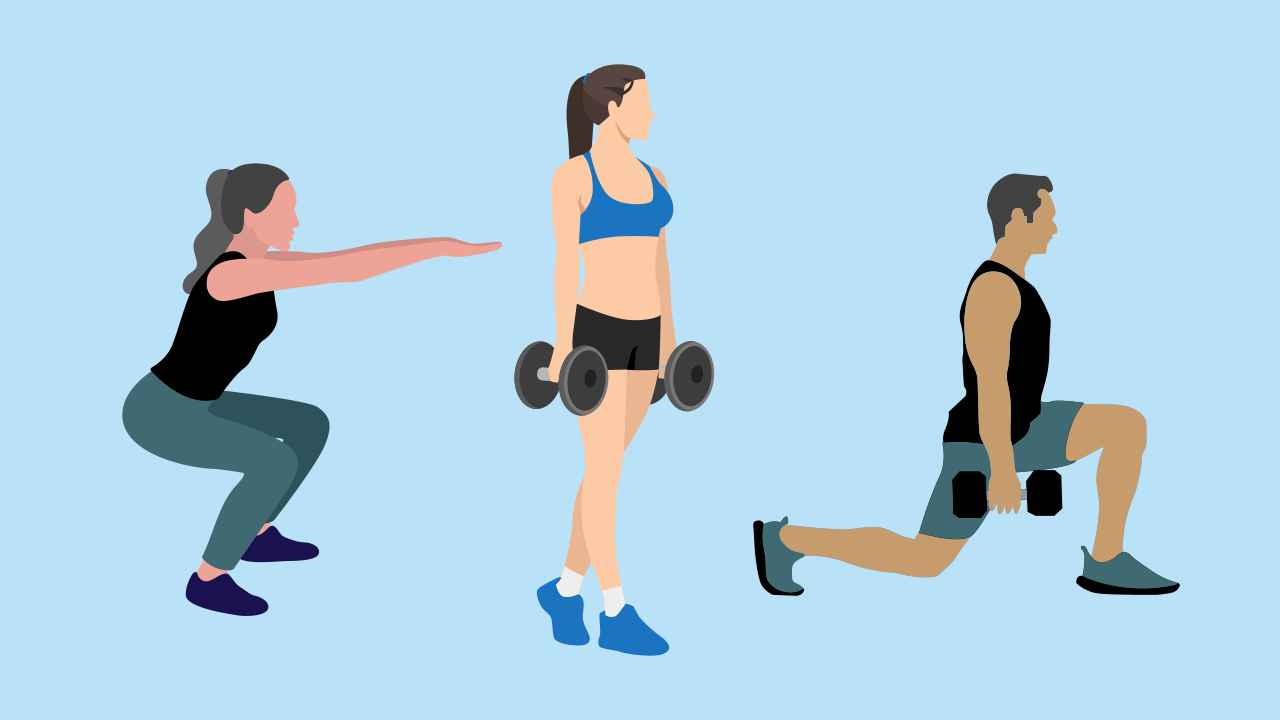
What Is the Science of Detraining?

It is well understood that training, whether aerobic or strength-based, over a certain period of time leads to physical and physiological adaptation. However, what happens when we cease training? With the recent global onset of the novel SARS-COVID-19 virus, many individuals have remained isolated and been unable to maintain daily exercise routines. In India, a survey of 995 individuals showed that 50.5% were not routinely participating in 30-minute moderate intensity aerobic exercises, which was a rise of 12% from pre-COVID times.
So, with current conditions now presenting so many barriers that limit exercise participation, the question becomes: what happens if we simply stop exercising? Does our body return to the state it was in before we started training? Do we start to gain weight, lose strength, lose cardiovascular fitness etc., and what does this do to our overall health?
How fast can you see improvements following training?
1. Strength training
In terms of resistance or strength training, there are two components of adaptations that underpin increase in strength and power. The first component involves the neural adaptations, which typically occur immediately following a resistance training session.
For example, increased neural drive (i.e., brain excitability) will occur during training to excite the neuromuscular system and prepare it for change. Indeed, there is evidence to suggest that brain excitability may remain elevated up to six hours post training, which may be the result of the brain attempting to overcome any peripheral (muscle) fatigue
Other adaptations may also include decreases in cortical (brain) inhibition, which subsequently releases the targeted/ trained muscles from being inhibited and improves excitatory drive to improve movement capacity. However, more evidence is required exploring the precise mechanisms of neural adaptations following resistance training, which is likely to be highly dependent on the trainee as well as the mode of resistance training undertaken (ie, type, training intensity, frequency of training etc.).
Nevertheless, one thing remains clear, neural adaptation plays an important role in the early improvements seen in strength and power, in the absence of muscle growth, within the acute (4-6 weeks) phases of a training program (Figure 1).
The second factor that underlies improvements in strength, as well as body composition, is muscle hypertrophy (growth). Unlike the neural adaptations mentioned before, muscle hypertrophy takes time and relies on several metabolic and physiologic adaptations to occur.
For example, it is possible that any early muscle growth over the first four weeks of training is caused by muscle edema responses (swelling), whereby myofibril protein synthesis is used more for tissue repair, rather than assisting in muscle hypertrophy.
Thus, evidence suggests that approximately 18 to 21 resistance training sessions, performed over seven to 10 weeks, is needed to induce significant functional muscle cross-sectional area changes (Figure 2).
2. Aerobic (cardiovascular) training
Evidence has shown that as little as three weeks of continuous aerobic training — undertaking 3×45 mins cycling sessions per week at moderate-high intensities (approx. 70% of one’s VO2 max) — can improve V02 max levels in both older and younger adults.
Undoubtedly, many aerobic fitness qualities can improve reasonably quickly (i.e., within eight weeks) after aerobic training has begun, including increases in blood volume, improved blood flow, and increased maximal oxygen uptake and cardiac output (i.e., caused by increased blood volume pumped out of the heart per stroke [stroke volume]).
Figure 3 shows the predicted percentage increases (or decreases, in some instances) of various aerobic factors following certain durations of endurance-based training.
Aerobic training has also been shown to significantly reduce body fat, particularly in visceral adiposity (i.e., fat usually found around the vital organs in the abdomen). Reduced visceral adiposity has several major health benefits such as improved metabolic function, reduced diabetes risk, reduced risk of heart disease, and certain cancer types.
A recent meta-analysis showed that three aerobic exercise training sessions per week for 12 to 16 weeks, with a duration of 30–60 mins per session, accomplished sufficient energy expenditure to impact visceral fat losses.
Detraining effects on neuromuscular, cardiovascular, and body composition qualities
In contrast to regular training, both short-term and long-term periods of non-training — also known as detraining — are likely to have wide ranging effects, leading to several neuromuscular and cardiovascular maladaptations. For example, detraining periods of approximately four weeks is likely to significantly reduce endurance capacity (i.e., V02Max output), which seems to be progressive and proportional to an individual’s fitness level. Reductions in V02Max are partly due to decreases in oxidative enzyme activities that blunt the production of our energy currency (i.e., Adenosine Triphosphate or ATP), as well as a diminished ability of muscle tissue to take up and absorb oxygen from circulating (arterial) blood.
In addition, detraining periods of between eight and 12 weeks can affect (and reduce) the volitional force-generating capacity of human skeletal muscles — so, a person’s ability to maximally contract their muscles voluntarily would be reduced. Attenuated force-generating ability during detraining periods may be due to a combination of neural and muscle architecture/ muscle fiber/ cross-sectional area changes
In general, the evidence suggests that cardiovascular adaptations return to pre-exercise levels sooner than resistance-based adaptations during periods of detraining. This is likely due to the motor learning that accompanies resistance training, which may induce brain plasticity. In other words, resistance training encourages neurons in the brain to adapt and reorganize to establish new connections that allow for learning effects and skill development, which may be longer-lasting compared to cardiovascular changes.
Regarding body composition, as little as five weeks of detraining can lead to increased weight gain (due partly to increased fat mass) and increased waist circumference, while also lowering resting metabolic rates. Waist circumference is important as it can be used as a proxy for intra-abdominal fat levels. High intra-abdominal fat levels have long been associated with multiple coronary artery disease risk factors including hypertension, insulin resistance and diabetes, as well as coronary artery disease. As such, detraining periods can potentially have long-term overall health implications.
When does detraining occur and what should I do to avoid it?
As we have established, detraining effects can occur shortly following acute periods of inactivity, with the effects becoming increasingly detrimental to muscle/ neural/ cardiovascular/ metabolic functions under more prolonged periods. The causes of detraining, however, may be wide ranging and dependent on the individual.
For example, injury may result in periods of detraining whereby trainees remain inactive to repair and restore muscle/ soft tissue function. In the recovery time (which is highly dependent on the presentation of the injury) several fitness qualities may worsen, and thus the trainee can lose self-confidence/ motivation to restore fitness levels
Moreover, several barriers exist to exercise participation, which are likely to change depending on the stage of the trainee. A common barrier, for example, is “lack of time”. An individual may often be exposed to changing work, social or even family constructs that compound the lack of time barrier, making it exceedingly challenging to overcome.
Furthermore, amidst the COVID-19 pandemic, social isolation and physical distancing has been shown to reduce physical activity participation rates on a global scale. This is perhaps due to several reasons, including;
- 1. Not having exercise equipment readily available at home to continue an exercise program,
- 2. Being exposed to temptations while at home that encourage sedentary activity (i.e., computer, television etc.),
- 3. Failing to stay self-motivated while in isolation, which may be connected to the social (group/peer) dynamics provided within a gym setting.
Helpful ways to avoid sustained periods of detraining
1. Reduce the training frequency. You can reduce your number of weekly sessions — if the burden of consistently training 4-5x per week is high, then aim for two sessions per week.
2. Reduce the training volume. For most people, this goes together with reducing frequency, but the point is that you do not have to make your sessions exceedingly long (i.e., 60 mins or more) to compensate for reduced frequency.
3. Increase the training intensity. Aim for a solid 20-25mins of hard training, which will allow you to make up for the reductions in training volumes.
4. Set yourself small, achievable, goals. Without regular goal setting, training can become quite repetitive, and you can lose motivation quickly. Set yourself weekly goals to tick off, and make sure you have larger overall monthly goals too. Setting goals will help to stay on track.
5. If you are injured, focus on the uninjured parts. For example, if you have a lower body injury, focus on building upper body strength or trunk strength. This way, you are still maintaining (or even improving) other fitness qualities around the injury.
6. Be decisive when planning your daily routine. If you know you need to get in 20-25mins of hard training every 2-3 days, then do it first thing in the morning or as soon as you get home from work. If you constantly put other things ahead of your fitness, you will quickly find yourself saying “I’ll just do it tomorrow”.
7. Change the mode of training. Often, we can get in a rut if we constantly do the same style of training repeatedly. Mix it up and try some new training approaches. For example, while stuck at home in lockdowns, try to put together some simple at-home bodyweight circuits:
- Body-weight speed squats (30sec)
- Elevated (or flat) push ups (x 15-20reps)
- Reverse walking lunges with suitcase carry (fill one suitcase and carry with one hand — then swap hands) (30sec)
- Spider-man climbs (30sec)
- Shuttle sprints (or burpees if there is no room to sprint) (x 10)
References
1. Murias, J. M., Kowalchuk, J. M., & Paterson, D. H. (2010). Time course and mechanisms of adaptations in cardiorespiratory fitness with endurance training in older and young men. Journal of applied physiology, 108(3), 621-627.
2. Hellsten, Y., & Nyberg, M. (2011). Cardiovascular adaptations to exercise training. Comprehensive Physiology, 6(1), 1-32.
3. Chopra, S., Ranjan, P., Singh, V., Kumar, S., Arora, M., Hasan, M. S., … & Baitha, U. (2020). Impact of COVID-19 on lifestyle-related behaviours-a cross-sectional audit of responses from nine hundred and ninety-five participants from India. Diabetes & Metabolic Syndrome: Clinical Research & Reviews, 14(6), 2021-2030.
4. Latella, C., & Haff, G. G. (2020). Global Challenges of Being a Strength Athlete during a Pandemic: Impacts and Sports-Specific Training Considerations and Recommendations. Sports, 8(7), 100.
5. Latella, C., Teo, W. P., Harris, D., Major, B., VanderWesthuizen, D., & Hendy, A. M. (2017). Effects of acute resistance training modality on corticospinal excitability, intra-cortical and neuromuscular responses. European journal of applied physiology, 117(11), 2211-2224.
6. Kidgell, D. J., Bonanno, D. R., Frazer, A. K., Howatson, G., & Pearce, A. J. (2017). Corticospinal responses following strength training: a systematic review and meta‐analysis. European Journal of Neuroscience, 46(11), 2648-2661.
7. Škarabot, J., Brownstein, C. G., Casolo, A., Del Vecchio, A., & Ansdell, P. (2020). The knowns and unknowns of neural adaptations to resistance training. European Journal of Applied Physiology, 1-11.
9. Damas, F., Libardi, C. A., & Ugrinowitsch, C. (2018). The development of skeletal muscle hypertrophy through resistance training: the role of muscle damage and muscle protein synthesis. European journal of applied physiology, 118(3), 485-500.
10. Chang, Y. H., Yang, H. Y., & Shun, S. C. (2021). Effect of exercise intervention dosage on reducing visceral adipose tissue: a systematic review and network meta-analysis of randomized controlled trials. International Journal of Obesity, 1-16.
11. Girardi, M., Casolo, A., Nuccio, S., Gattoni, C., & Capelli, C. (2020). Detraining Effects Prevention: A New Rising Challenge for Athletes. Frontiers in Physiology, 11.
12. Ormsbee, M. J., & Arciero, P. J. (2012). Detraining increases body fat and weight and decreases V [combining dot above] O2peak and metabolic rate. The Journal of Strength & Conditioning Research, 26(8), 2087-2095.
13. Williams, P. T., & Thompson, P. D. (2006). Dose‐dependent effects of training and detraining on weight in 6406 runners during 7.4 years. Obesity, 14(11), 1975-1984.
14. Mujika, I., & Padilla, S. (2001). Muscular characteristics of detraining in humans. Medicine & Science in Sports & Exercise, 33(8), 1297-1303.
15. Mujika, I., & Padilla, S. (2000). Detraining: loss of training-induced physiological and performance adaptations. Part I. Sports Medicine, 30(2), 79-87.


